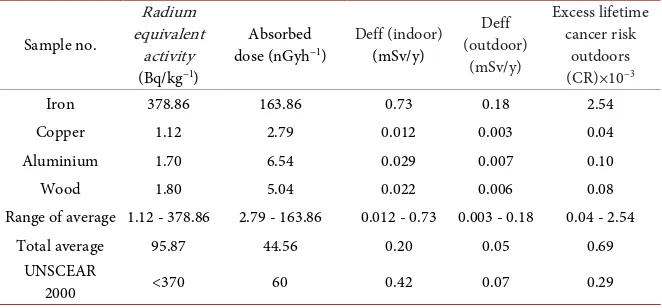Gamma Radiation Hazards and Risks Associated with Industrial Wastes Materials
Full text
Figure



Related documents
Due to a lack of surveillance data, little is known about resistance rates in uncomplicated urinary tract infection (UTI) in general practice in Germany.. In a prospective
Methods and Methods: This research cares to study the concentration of the natural radioactivity (238-U, 232-Th and 40-K) and radon for fourteen samples of soil from
The research study identified a marked difference between applicants and probation students and one of the control groups of students (pharmacy) with the former groups scoring
This study attempts to demonstrate the poss i bility of us in g residential density and floor area to land ratio as pass ive parameters to reduce
The main objective is to study the behavior of a typical crude oil experiencing heavy particle deposition during production operations and find out how the variation of
The study raises some issues concerning the operationalisation of individual differences in intentionality inferences that future research using the current measure might take
In order to investigate the importance of each of triplet managerial skills among managers of nursing services, Hosseini (1997) concluded that correct evaluation skill of
Motifs I, Ia, II, III, IV, V, and VI, which are conserved in similar helicases encoded by both viruses and cellular organisms, line the ATP binding cleft, and some of these